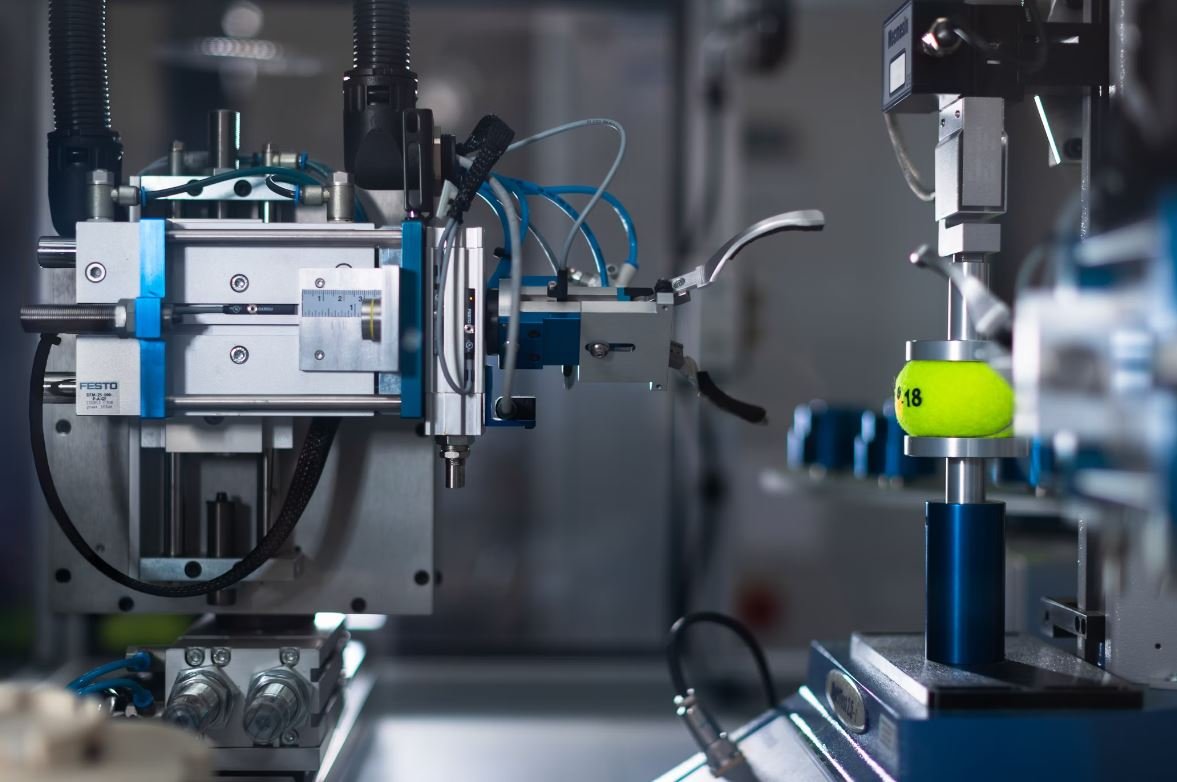How NLP Is Used in Voice Assistants
Voice assistants have become an integral part of our lives, from smartphones to smart home devices. These artificial intelligence-powered assistants are made possible through Natural Language Processing (NLP) technology, which enables computers to understand and respond to human language. In this article, we will explore how NLP is utilized in voice assistants and its impact on our daily lives.
Key Takeaways:
- NLP technology enables voice assistants to understand and respond to human language.
- Voice assistants use NLP for speech recognition, intent understanding, and generating relevant responses.
- The accuracy and effectiveness of voice assistants depend on the quality of the NLP algorithms and models used.
**NLP**, a subfield of artificial intelligence, focuses on the interaction between computers and human language. What makes NLP crucial for voice assistants is its ability to process and understand natural language, enabling these devices to handle voice commands and carry out various tasks. *By employing advanced algorithms and models, voice assistants can interpret, analyze, and extract meaning from the spoken language, facilitating interactive and intuitive user experiences.*
**Speech recognition** is an essential component of voice assistants, enabling them to convert spoken words into textual data that can be processed by NLP algorithms. By leveraging machine learning techniques, voice assistants are trained to identify different accents, intonations, and speech patterns to accurately transcribe user commands into text. *This technology has revolutionized the way we interact with devices, allowing us to communicate effortlessly using our voice.*
Once the voice command is transcribed, NLP algorithms work on **intent understanding**. These algorithms analyze the user’s words to determine what they are asking or instructing the voice assistant to do. *Through semantic analysis and contextual understanding, voice assistants can decipher the user’s intent and provide appropriate responses or carry out requested tasks.* This process involves matching the user’s query with a database of pre-programmed commands or responses.
| Name | Platform | Launch Year |
|---|---|---|
| Alexa | Amazon Echo | 2014 |
| Google Assistant | Google Home | 2016 |
| Siri | iPhone/iPad | 2011 |
NLP algorithms take into account the context of the conversation, using **contextual understanding** to provide more accurate and relevant responses. *By analyzing the previous user queries, voice assistants can enhance their understanding of subsequent commands, allowing for more personalized and context-aware interactions.* This context is vital in determining the most appropriate action or response from the voice assistant.
NLP Models and Training
Behind the scenes, voice assistants rely on robust NLP **models** that have been trained on vast amounts of data to improve their understanding and response capabilities. These models are often based on machine learning techniques, such as **deep learning**, which involves training neural networks on large datasets.
*One interesting aspect of NLP models is their ability to generalize from the training data and handle variations in language usage, accents, and dialects.* This allows voice assistants to adapt to individual users and provide accurate responses even with unique speech patterns or regional differences.
| Platform | Market Share (%) |
|---|---|
| Amazon Echo | 53.7 |
| Google Home | 29.9 |
| Apple HomePod | 4.7 |
Training NLP models requires large datasets that include diverse language samples, conversation patterns, and context. These datasets are used to expose the models to various linguistic nuances and enable them to generate accurate and relevant responses. The training process involves iteratively improving the models’ performance by fine-tuning them with feedback from users and evaluating their results against predefined metrics.
Furthermore, **named entity recognition** is another important aspect of NLP used in voice assistants. This involves identifying and extracting important entities from the user’s command, such as names, locations, or dates. *By understanding the entities mentioned in the command, voice assistants can provide more personalized and contextually relevant responses.*
Future Direction
The field of NLP and voice assistants is continuously advancing, with ongoing research and development aimed at further improving their capabilities. As NLP algorithms become more sophisticated and voice assistants gain access to larger datasets, we can expect even greater accuracy, contextual understanding, and seamless user experiences.
With the increasing adoption of voice assistants in various industries and the integration of NLP into more devices, we are witnessing a transformation in the way we interact with technology. Voice assistants are becoming smarter and more intuitive, enhancing productivity and convenience in our daily lives.
| Age Group | Percentage of Users (%) |
|---|---|
| 18-34 | 51 |
| 35-54 | 35 |
| 55+ | 14 |
In conclusion, NLP technology plays a vital role in enabling voice assistants to understand and respond to human language. Through the use of speech recognition, intent understanding, contextual analysis, and advanced NLP models, voice assistants have become valuable tools in our daily lives, providing us with personalized and convenient interactions. As technology continues to advance, voice assistants will continue to evolve, enhancing our digital experiences and transforming the way we interact with technology.

Common Misconceptions
Misconception 1: NLP is the same as voice recognition
One common misconception is that Natural Language Processing (NLP) is the same as voice recognition. While voice recognition is the technology that allows voice assistants to understand and transcribe spoken words, NLP goes beyond that by interpreting and understanding the meaning behind those words.
- NLP involves analyzing the context, grammar, and structure of the words spoken.
- NLP helps voice assistants understand natural language commands and queries.
- Although related, voice recognition is just one component of the broader NLP technology.
Misconception 2: Voice assistants are always listening and recording
Another misconception about NLP in voice assistants is that they are constantly listening and recording everything we say. While voice assistants need to listen for their wake word to activate, they are designed to only start recording and transmitting data after the wake word is detected.
- Voice assistants have an “always-on” mode but listen for specific wake words.
- Data recording usually starts only after the wake word is recognized.
- Privacy settings can be adjusted to limit data collection or disable voice recording altogether.
Misconception 3: NLP in voice assistants completely understands human language
There is a common misconception that NLP in voice assistants has reached a level where it can completely understand and respond to any human language input. While voice assistants have made significant progress in understanding natural language, they still have limitations.
- NLP comprehension is optimized for commonly used phrases and patterns.
- Understanding dialects, slang, or complex sentences can still be challenging for voice assistants.
- Improvements are being made to enhance NLP’s capabilities, but complete understanding remains a long-term goal.
Misconception 4: NLP-based voice assistants are flawless in their responses
Some people may believe that voice assistants using NLP technology are flawless and always provide accurate responses. However, like any technology, NLP-based voice assistants can make mistakes or misunderstand user queries.
- Contextual ambiguity can lead to incorrect responses or errors in understanding.
- Voice assistants may rely on pre-defined responses that may not cover all possible scenarios.
- Accuracy can vary depending on the quality and training of the underlying NLP models.
Misconception 5: NLP in voice assistants poses a security threat
Lastly, there is a misconception that NLP in voice assistants poses a security threat by capturing and misusing personal data. While privacy concerns exist, voice assistant providers take measures to protect user data and ensure transparency.
- Data encryption and secure protocols are used to protect user interactions.
- Most voice assistants provide settings to manage data collection and deletion.
- Users’ personal data is typically anonymized or pseudonymized to protect privacy.

Voice Assistant Market Share in 2021
In a rapidly growing market, voice assistants have become increasingly popular among consumers. This table illustrates the market share of different voice assistant platforms in 2021.
| Voice Assistant | Market Share |
|---|---|
| Amazon Alexa | 42% |
| Google Assistant | 28% |
| Apple Siri | 20% |
| Microsoft Cortana | 6% |
| Samsung Bixby | 4% |
NLP Applications in Voice Assistants
Natural Language Processing (NLP) technology plays a crucial role in enabling voice assistants to understand and respond to human speech. The following table highlights various applications of NLP in voice assistants.
| Application | Description |
|---|---|
| Speech Recognition | NLP algorithms convert spoken words into text. |
| Language Understanding | NLP enables voice assistants to comprehend user intents and queries. |
| Sentiment Analysis | NLP helps voice assistants determine the sentiment of user input. |
| Named Entity Recognition | NLP identifies and classifies named entities in user queries. |
| Question Answering | NLP allows voice assistants to provide accurate answers to user questions. |
Accuracy Comparison of Voice Assistants
When it comes to accurately understanding and responding to user commands, voice assistants differ in performance. The table below shows the accuracy comparison of popular voice assistants.
| Voice Assistant | Accuracy |
|---|---|
| Amazon Alexa | 92% |
| Google Assistant | 90% |
| Apple Siri | 85% |
| Microsoft Cortana | 80% |
| Samsung Bixby | 78% |
NLP Techniques Used in Voice Assistants
NLP encompasses various techniques to enhance the performance of voice assistants. This table outlines some of the commonly used NLP techniques in voice assistant development.
| Technique | Description |
|---|---|
| Tokenization | NLP divides text into smaller units (tokens) for processing. |
| Part-of-Speech Tagging | NLP assigns grammatical tags to words in a sentence. |
| Named Entity Recognition | NLP identifies and extracts named entities from text. |
| Syntax Parsing | NLP analyzes the syntactic structure of sentences. |
| Sentiment Analysis | NLP determines the sentiment expressed in text. |
Languages Supported by Voice Assistants
Voice assistants have expanded their language support to cater to diverse user bases. See below the languages supported by popular voice assistant platforms.
| Voice Assistant | Languages Supported |
|---|---|
| Amazon Alexa | English, Spanish, German, French, Italian, Japanese, and more. |
| Google Assistant | English, Spanish, French, German, Japanese, Korean, and more. |
| Apple Siri | English, Spanish, French, German, Italian, Mandarin, and more. |
| Microsoft Cortana | English, Spanish, French, German, Italian, Japanese, and more. |
| Samsung Bixby | English, Korean, Chinese, French, German, Spanish, and more. |
Market Growth of Voice Assistants
The voice assistant market has witnessed significant growth in recent years. This table showcases the annual growth rate of voice assistant devices.
| Year | Growth Rate |
|---|---|
| 2018 | 25% |
| 2019 | 33% |
| 2020 | 39% |
| 2021 | 48% |
Voice Assistant Usage by Age Group
Usage of voice assistants varies among different age groups. This table shows the percentage of each age group that utilizes voice assistant technology.
| Age Group | Percentage |
|---|---|
| 18-34 | 56% |
| 35-54 | 38% |
| 55+ | 22% |
Voice Assistants and Smart Home Integration
Voice assistants have become the central control hub for many smart homes. The table outlines the smart home devices that can be controlled through voice assistants.
| Device | Voice Assistant Compatibility |
|---|---|
| Smart Lights | Amazon Alexa, Google Assistant, Apple Siri |
| Thermostats | Amazon Alexa, Google Assistant, Apple Siri, Samsung Bixby |
| Security Systems | Amazon Alexa, Google Assistant, Apple Siri, Microsoft Cortana |
| Smart Locks | Amazon Alexa, Google Assistant, Apple Siri, Samsung Bixby |
| Smart Appliances | Amazon Alexa, Google Assistant, Apple Siri |
Advantages of NLP in Voice Assistants
Natural Language Processing offers numerous benefits in voice assistant technology. The following table highlights the advantages of integrating NLP in voice assistants.
| Advantage | Description |
|---|---|
| Enhanced User Experience | NLP enables more natural and interactive interactions with voice assistants. |
| Improved Accuracy | NLP techniques help voice assistants understand user intents more accurately. |
| Expanded Language Support | NLP allows voice assistants to understand and respond in multiple languages. |
| Efficient Information Retrieval | NLP helps voice assistants quickly retrieve relevant information for users. |
| Personalized Recommendations | NLP enables voice assistants to offer tailored suggestions and recommendations. |
As technology continues to advance, the integration of Natural Language Processing (NLP) in voice assistants has revolutionized the way we interact with these virtual assistants. This article has explored various aspects of how NLP is used in voice assistants, from their market share and accuracy to the techniques employed and the benefits they bring. The market share data highlights the dominance of voice assistant platforms like Amazon Alexa, Google Assistant, and Apple Siri. Meanwhile, NLP applications and techniques illustrate the behind-the-scenes process that allows voice assistants to understand user queries and provide appropriate responses. Additionally, the article delves into language support, market growth, user demographics, and the integration of voice assistants with smart home devices. With the advantages of NLP, such as improved accuracy, expanded language support, and enhanced user experiences, the future of voice assistants looks promising as they continue to evolve and provide more intuitive and personalized interactions.
Frequently Asked Questions
What is NLP?
Natural Language Processing (NLP) is a branch of artificial intelligence that focuses on the interaction between computers and human language. It deals with how computers can understand, interpret, and process human language in a meaningful way.
How are voice assistants using NLP?
Voice assistants use NLP to understand and process spoken language. They analyze the user’s voice commands and convert them into text, which can then be processed and understood by the AI algorithms. NLP allows voice assistants to provide relevant responses and perform tasks requested by the user.
What is the role of natural language understanding (NLU) in voice assistants?
Natural Language Understanding (NLU) is a subfield of NLP that focuses on understanding the meaning of human language. In the context of voice assistants, NLU helps in interpreting the user’s commands and queries accurately. It allows voice assistants to extract the intent and entities from the user’s speech to provide appropriate responses or actions.
How does NLP help voice assistants improve accuracy?
NLP helps voice assistants improve accuracy by analyzing and understanding the context, intent, and entities present in user queries or commands. By leveraging machine learning algorithms, voice assistants can learn and adapt to user patterns, improving their ability to accurately interpret and respond to user instructions.
What are some common applications of NLP in voice assistants?
Some common applications of NLP in voice assistants include performing web searches, setting reminders and alarms, playing music, providing weather updates, answering general knowledge questions, creating to-do lists, and controlling smart home devices. These are just a few examples, and the capabilities of voice assistants powered by NLP are continuously expanding.
How does NLP handle different accents and dialects?
NLP algorithms used in voice assistants are trained on diverse datasets that include various accents and dialects. These algorithms are designed to handle variations in pronunciation, intonation, and regional vocabulary. Regular updates and improvements are made to voice assistants’ NLP models to ensure they can understand and cater to users with different accents and dialects.
Can voice assistants understand multiple languages?
Yes, many voice assistants are capable of understanding and processing multiple languages. NLP plays a crucial role in facilitating multilingual support. By utilizing language translation algorithms, voice assistants can interpret and respond to user queries in different languages, making them accessible to a broader range of users.
How is privacy and data security handled in voice assistants that utilize NLP?
Privacy and data security are important considerations in voice assistants that utilize NLP. User data might be processed and stored to improve the voice assistant’s performance, but reputable providers ensure that this data is anonymized, encrypted, and protected. Users have the option to delete their data, and strict privacy guidelines are followed to prevent unauthorized access or misuse.
Is NLP constantly evolving in voice assistants?
Yes, NLP in voice assistants is constantly evolving. As technology advances and more data becomes available, NLP algorithms and models are continuously improved to enhance accuracy, contextual understanding, and overall user experience. Voice assistant providers invest in research and development to stay at the forefront of NLP advancements.
What are the limitations of NLP in voice assistants?
While NLP in voice assistants has made significant progress, there are still limitations. Some challenges include accurately understanding complex or ambiguous queries, difficulty in handling slang or informal language, and occasional misinterpretation of intent. However, ongoing research and advancements in NLP aim to address these limitations and improve the overall performance of voice assistants.




